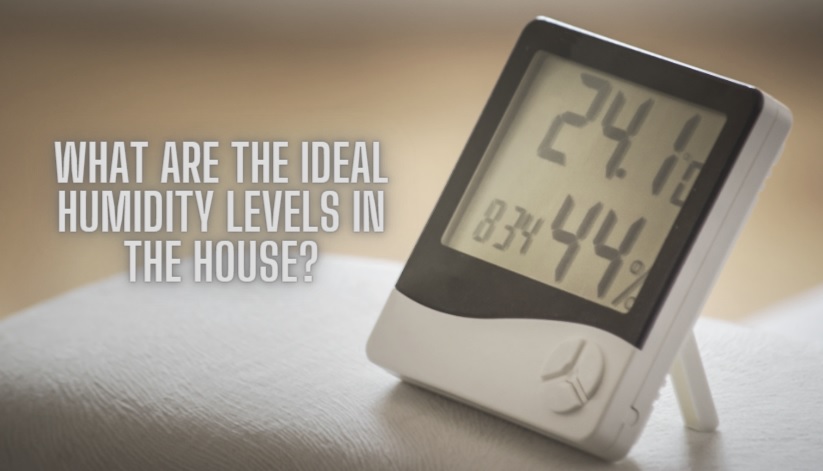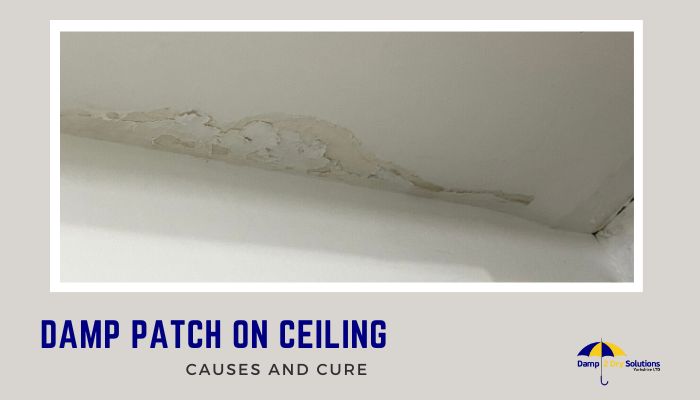Although the word “humidity” may conjure up images of distant beaches and deep rain forests, it is a constant in our environment. Despite being as natural as it gets, humidity in the home can cause problems – both at the high and low end of the scale – raising the question, What must humidity levels be in the home?
What is Humidity?
The amount of moisture molecules in our atmosphere is measured as humidity. What exactly does humidity imply to us? Because water vapour maintains heat in the air, when the humidity levels are high, the air feels particularly muggy or unpleasant on our skin. Warm air can store more moisture than cold air.
When the humidity in the air is low, the air gets significantly drier on our bodies. This occurs, for example, in the desert or on a cold, crisp winter day. The humidity of the weather is determined by its location and climate.
To grasp the concept of humidity, it is essential to delve into the distinction between relative humidity and absolute humidity.
Absolute Humidity
“Absolute humidity” refers to the amount of water present in the air, expressed as the mass of water divided by the mass of air in a specific volume. It quantifies the actual mass of moisture in the surrounding air. Absolute humidity is typically measured in grams of moisture per cubic meter of air (g/m³).
Relative Humidity
On the other hand, “relative humidity” is a more commonly known measure of humidity. For determining the ideal humidity level in a home, we rely on relative humidity. While absolute humidity indicates the quantity of water vapor in the air, relative humidity indicates the current level of moisture in the air relative to its maximum capacity.
For instance, when the relative humidity is at 40%, it means that the air around you contains 40% of the moisture it could potentially hold.
What are Ideal Humidity Levels to Maintain in the House?

Fortunately, the range in which ideal indoor humidity in the UK can be achieved is rather vast. You’re in good health if your reading falls between 30 and 60 percent. However, maintaining such levels might be difficult; thus, frequent monitoring is recommended. This can be accomplished with a hygrometer, which can be obtained online for less than a tenner.
A good range of indoor humidity for comfort and health is between 30-60% during cooler months of the year. – Oxford.Gov.UK
As one can assume, the shifting seasons result in varying humidity levels. The difference, however, is marginal. Winter and summer levels are both in the 30-60% range, with a 10% variance at the acceptable end of the scale:
- Optimal summer indoor humidity levels: 40-60%
- Ambient winter humidity levels that are ideal: 30-50 percent
Anything exceeding 70% humidity is considered very high, while anything less than 25% humidity is considered low. These must be addressed regardless of the season.
Ideal Humidity Levels For Different Rooms
| Room | Ideal Humidity (%) | Recommended Humidity Levels |
| Living Room | 40-50% | Comfortable for most people; prevents static electricity and damage to furniture. |
| Bedroom | 30-50% | Improves sleep quality; prevents dry skin and respiratory problems. |
| Kitchen | 40-50% | Prevents mould and mildew growth due to cooking steam. |
| Bathroom | 40-60% | Common high humidity from showers; manage to avoid mould. |
| Basement | 30-50% | Prevents dampness, mould, and mildew. |
| Home Office | 30-50% | Comfortable for working; protects electronics from moisture damage. |
What Causes Too High Humidity in the Home?
Humidity is affected by a variety of elements, including air temperature and pressure. A weather station can be used to measure humidity. The drawback is that you might need one in each room for it to be considered dependable, specifically in each room.
The ideal humidity level is between 41 and 59 percent. When the humidity exceeds this amount, it is considered excessive. High humidity levels encourage the growth of mould and germs in the home, which is extremely harmful to your health. Asthmatic people, in particular, will suffer greatly as a result of this. It can also have a harmful impact on the house’s electronics.
What Causes Too Low Humidity in the Home?
When the humidity in the house is too low, the wood in the house may crack and crack a little more. This is because of dehydration. In the winter, humidity levels are frequently excessively low. Because of the chilly weather, many houses have turned up the heat and are less inclined to open a window.
Effects Of Low Humidity On Your Health

Low humidity can lead to dry mouth, headaches, cracked lips, dry skin, and difficulties concentrating. Viruses can also survive longer in dry air, dramatically increasing the risk of disease.
Here is the complete list of effects of low humidity.
- Bloody noses.
- Allergy and asthma flare-ups.
- Chapped and cracked lips.
- Dry, itchy skin and eyes.
- Cold and flu symptoms.
- Itchy throat.
- Dry, cracking wood and furniture.
- Static electricity.
How to Maintain a Good Level of Humidity in the House?
You may do several things if your humidity levels are too low to get it between 40 and 60 percent.
- Allow enough natural air to enter by opening a window or door.
- Wipe the floor in the house on a regular basis. This may raise the humidity.
- Greenhouse plants can be used to decorate your home. They are attractive, filter the air, and maintain a higher level of humidity in the home.
- You could also get an automatic humidifier. One significant advantage is that they always maintain the proper humidity level.
- In case you want to increase humidity levels in your house, you can dry your clothes inside or boil water on the stove.
When your humidity levels get too high, avoid the items listed above. When they are high, make sure to employ extra airflow when cooking, showering, and when there are a lot of people in the house.
How to Handle Humidity Throughout the Year
The most important recommendation is to…ventilate. Circulating the air inside our homes is critical if you want to keep moisture at bay and maintain appropriate humidity levels all year, so crack open those windows. Yes, even in the winter.

All it takes is 10-20 minutes of airflow via several open windows to create a ‘through-draft,’ and you’re done. This will eliminate much of the trapped humidity and allow other nasties to escape, such as Volatile Organic Compounds.
If you need expert help or advice? Contact Us.





